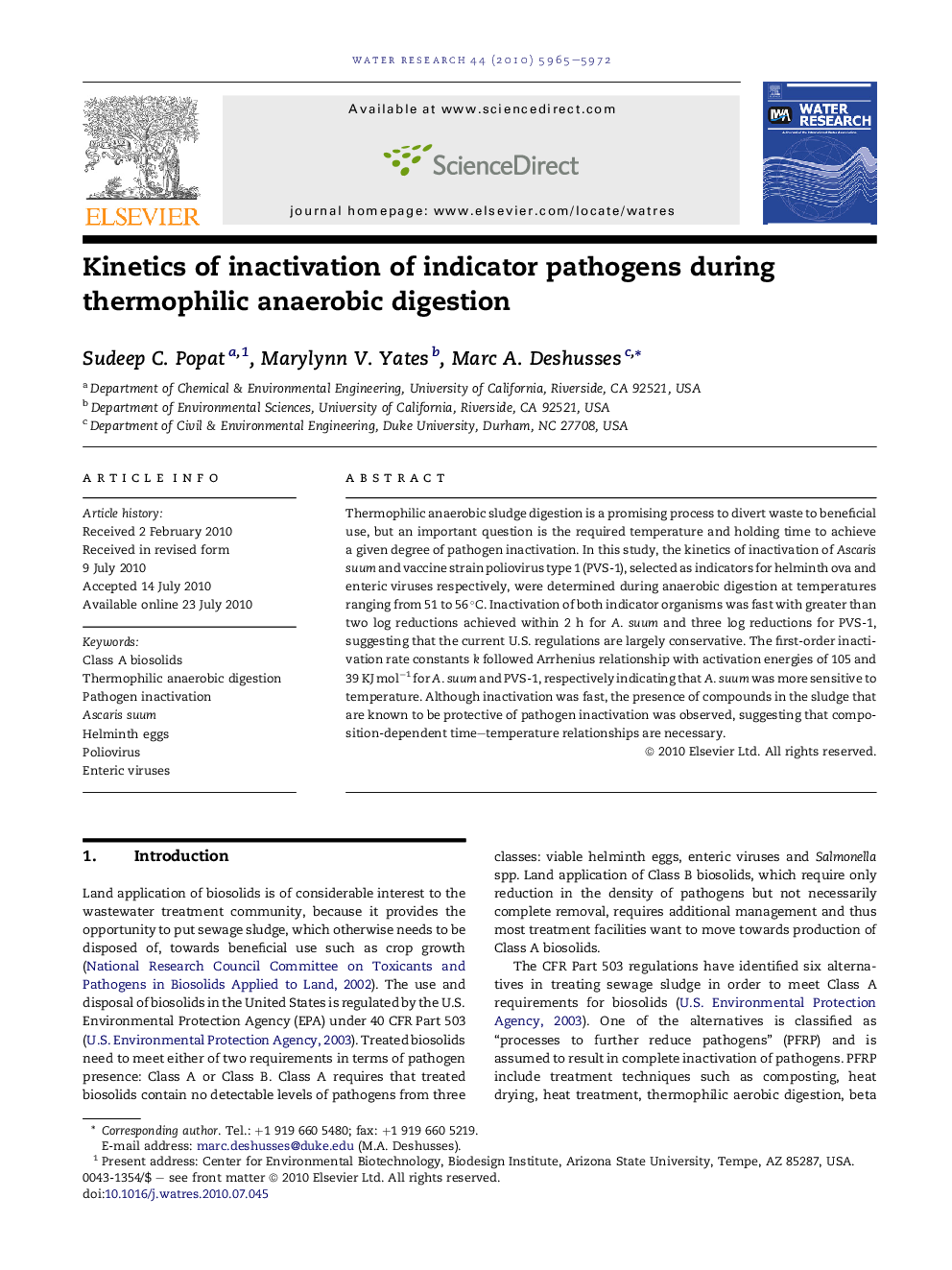| Article ID | Journal | Published Year | Pages | File Type |
|---|---|---|---|---|
| 4483685 | Water Research | 2010 | 8 Pages |
Thermophilic anaerobic sludge digestion is a promising process to divert waste to beneficial use, but an important question is the required temperature and holding time to achieve a given degree of pathogen inactivation. In this study, the kinetics of inactivation of Ascaris suum and vaccine strain poliovirus type 1 (PVS-1), selected as indicators for helminth ova and enteric viruses respectively, were determined during anaerobic digestion at temperatures ranging from 51 to 56 °C. Inactivation of both indicator organisms was fast with greater than two log reductions achieved within 2 h for A. suum and three log reductions for PVS-1, suggesting that the current U.S. regulations are largely conservative. The first-order inactivation rate constants k followed Arrhenius relationship with activation energies of 105 and 39 KJ mol−1 for A. suum and PVS-1, respectively indicating that A. suum was more sensitive to temperature. Although inactivation was fast, the presence of compounds in the sludge that are known to be protective of pathogen inactivation was observed, suggesting that composition-dependent time–temperature relationships are necessary.
